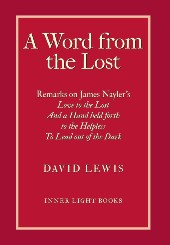Synopsis
This book is a commentary on Love to the Lost And a Hand held forth to the Helpless To Lead out of the Dark, a pamphlet published by the early Quaker James Nayler in February 1656. It explores Nayler’s theology described in this pamphlet, which was written prior to his blasphemy conviction, as similar to that of other early Quakers. This book puts Nayler’s thought into its historical and biographical context.
It is not easy to be sure what Nayler meant in his pamphlet. Several mountain ranges stand between us and James Nayler: the changed thinking of the Enlightenment about God and the universe; the aesthetic revolution of the Romantics; and the post-modern and liberal Quaker skepticism about whether absolute and certain “Truth” exists. We lack his deep Christian background. Modern Friends probably understand more about (for example) Buddhism and Celtic mysticism than the theological mix of Reformation Europe. But despite these difficulties, this book chooses to assume that there is a continuity in spirituality between Nayler and twenty-first-century Friends, even though it may not be expressed in the same language.
Central to this commentary is a comparison of the theology in Love to the Lost with the various books of discipline of London Yearly Meeting (later Britain Yearly Meeting). The comparison will, it is hoped, explain Nayler to a modern audience, illustrate the Quaker journey since 1652, and offer some reflections on the present condition of Quakerism in Great Britain.
The commentary is divided into twenty-four short chapters. Fourteen of these reflect on individual chapters from Love to the Lost. In between these are eight chapters on aspects of James Nayler’s life and its context. These are intended to give present-day readers some insight into what may have been in his mind as he wrote. To help navigate unfamiliar history, a chronology of his life and a note on the wars of 1642-1653 are also provided.






